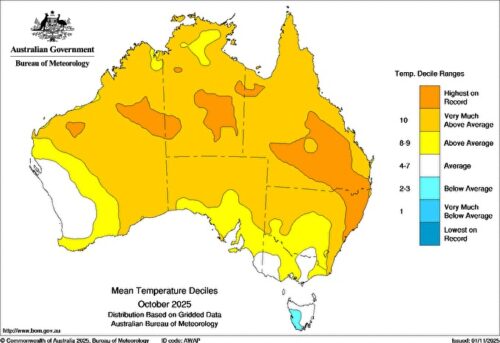Surges of tropical cloud and rainfall produced a relatively cool and wet April for large parts of Australia, although a few places in Queensland registered their warmest April on record.
Australia’s area-averaged rainfall during April was 41.4 mm, which is 10.9 mm above the 1961-1990 average and the country’s wettest April since 2006.
The map below shows that most of the anomalously high rainfall in last month occurred over WA, the NT and SA. This broad area of unseasonable rain was caused by injections of tropical moisture associated with Tropical Cyclones Herman and Ilsa.

Image: Rainfall deciles during April 2023. Source: Bureau of Meteorology
Abundant cloud cover also helped suppress daytime temperatures over large areas of Australia last month. The country as a whole registered a mean maximum temperature of 28.65ºC, which is 0.05ºC below the 1961-1990 average and Australia’s coolest April maximum temperature since 2015.

Image: Maximum temperature deciles during April 2023. Source: Bureau of Meteorology
But while April was relatively cool for Australia as a whole, there were some pockets of exceptional mid-autumn warmth.
Queensland’s mean maximum temperature was 1.1ºC above the long-term average and some areas in the state’s eastern tropical had their warmest April on record based on maximums.
DTN APAC can provide tailored climate briefings to your business to alert you of the most likely weather conditions and hazards to look out for during the upcoming season. Now is a good time to get a good look at the forecast for winter and beyond. To find out more or to book a presentation, please email apac.sales@dtn.com.






